Abstract
Although cycloheximide is extremely inhibitory to protein synthesis in vivo in higher plants, the reported insensitivity of some plant ribosomes suggests that it may not invariably act at the ribosomal level. This suggestion is reinforced by results obtained with red beet storage tissue disks, the respiration of which is stimulated by cycloheximide at 1 microgram per milliliter. Inorganic ion uptake by these disks is inhibited by cycloheximide at 1 microgram per milliliter while the uptake of organic compounds, by comparison, is unaffected. Ion uptake by all nongreen tissues tested is inhibited by cycloheximide, but leaf tissue is unaffected, indicating that the ion absorption mechanism in the leaf may differ fundamentally from that in the root. It is concluded that cycloheximide can affect cellular metabolism other than by inhibiting protein synthesis and that the inhibition of ion uptake may be due to disruption of the energy supply.
Full text
PDF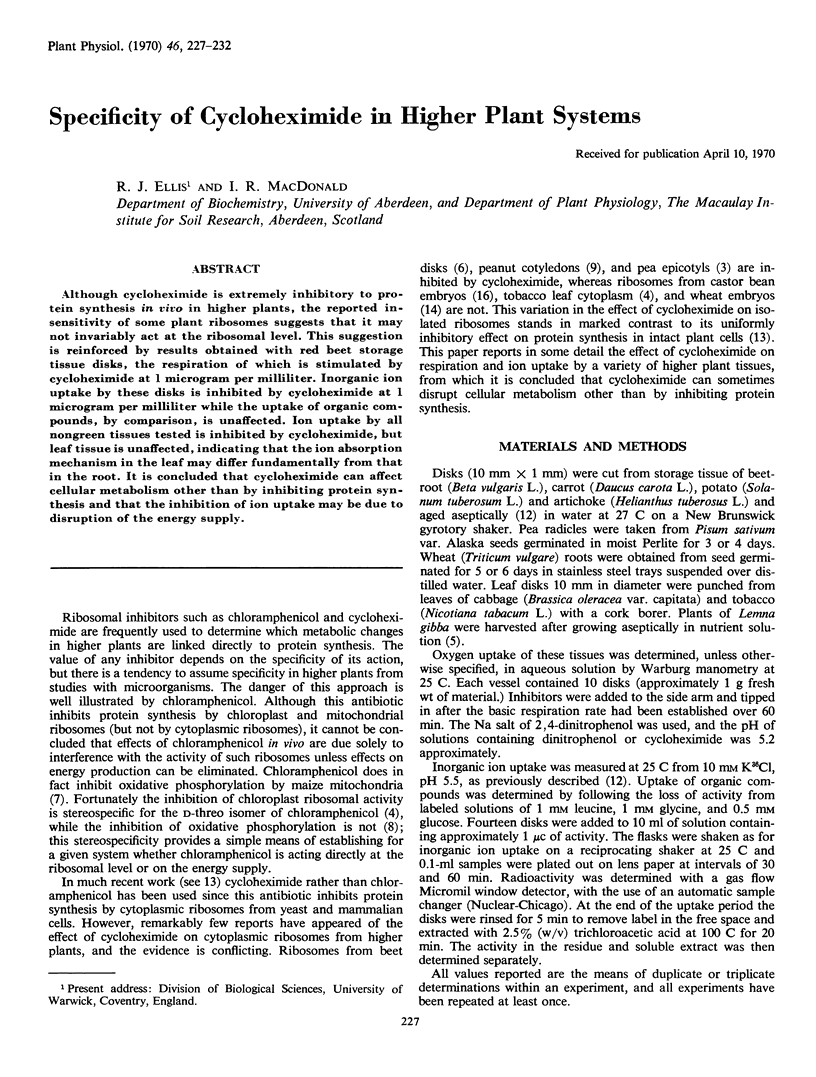
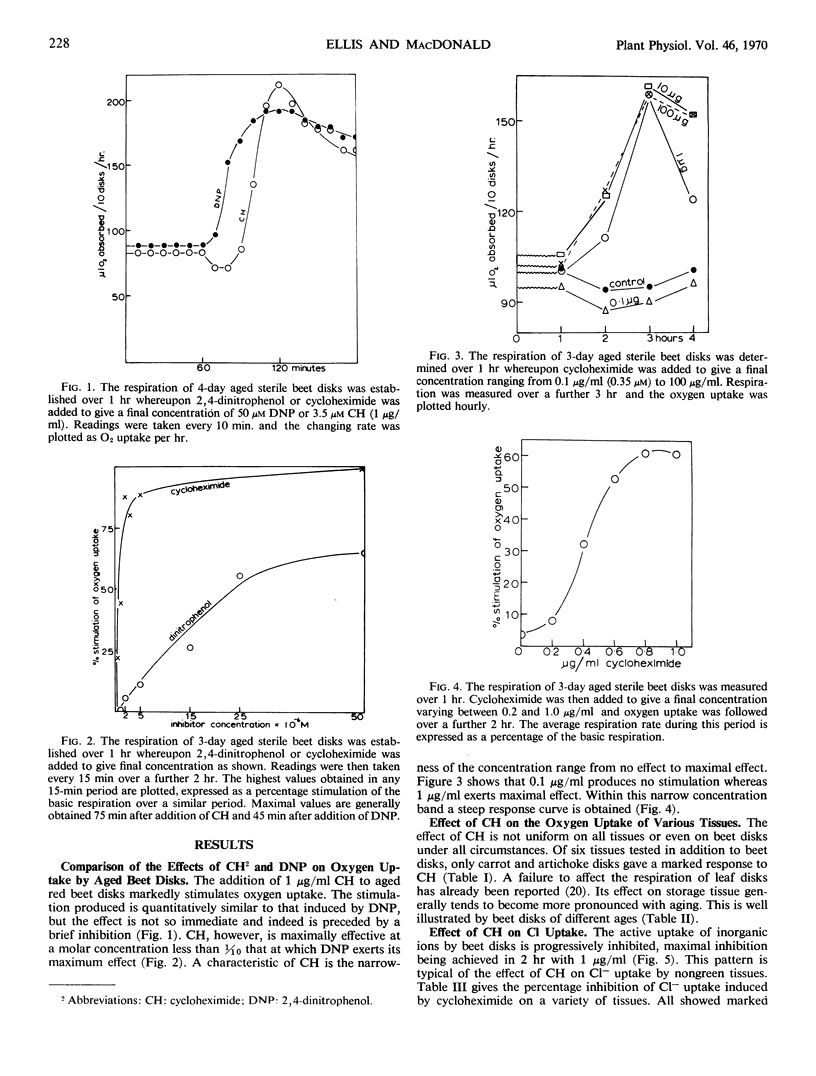

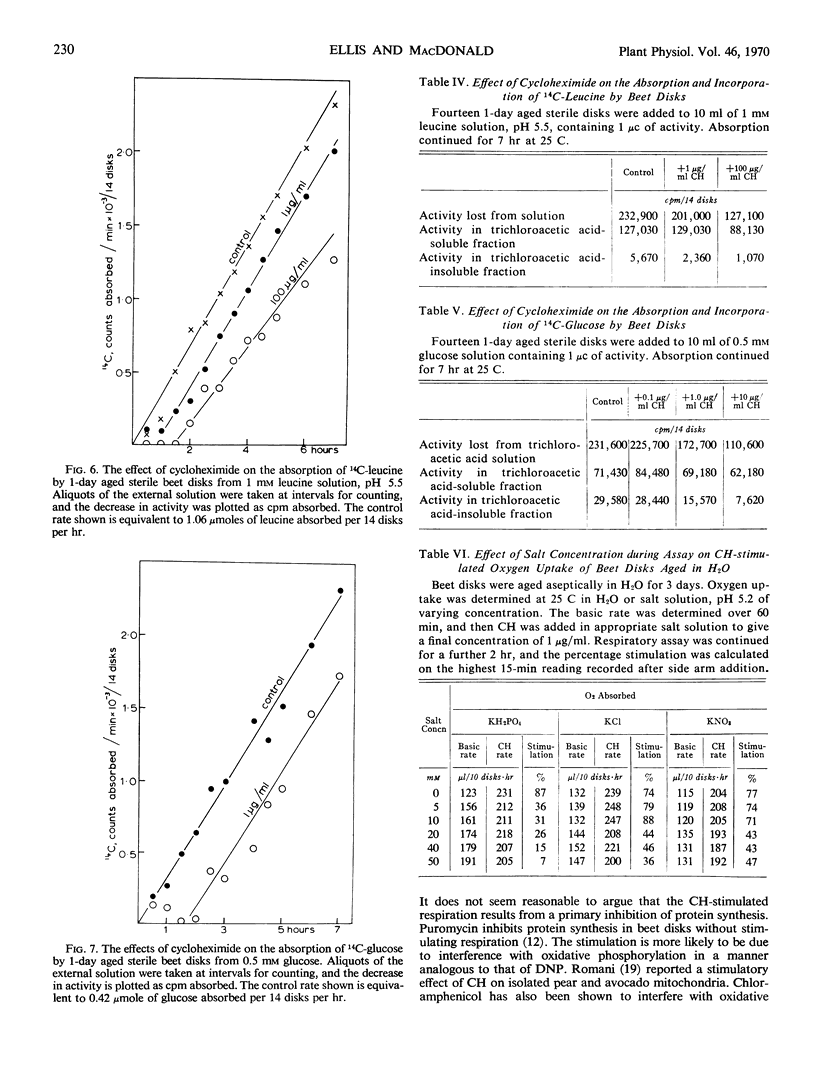
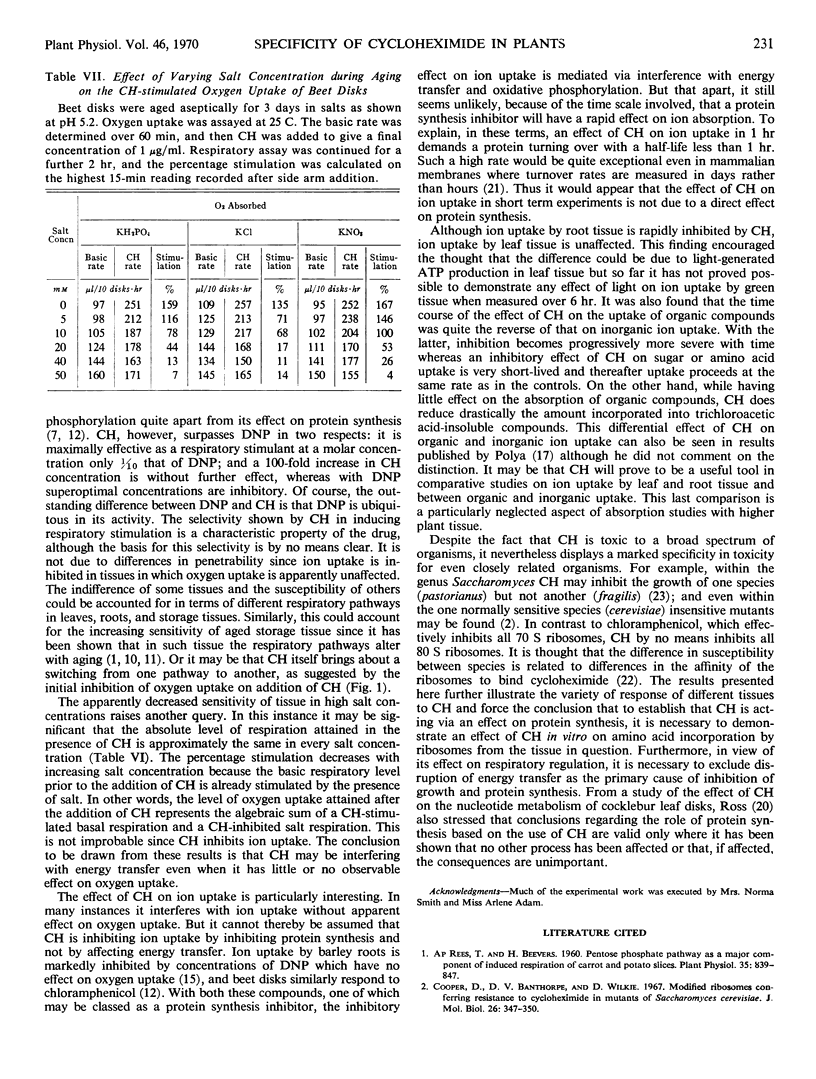
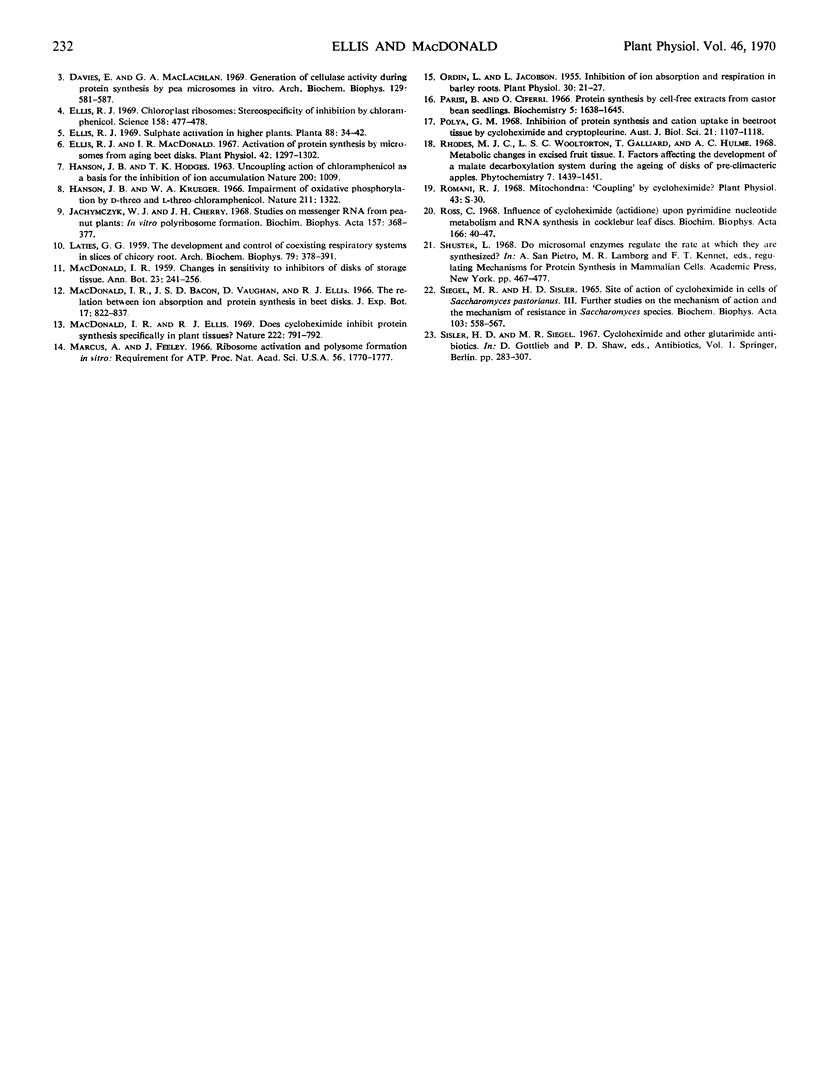
Selected References
These references are in PubMed. This may not be the complete list of references from this article.
- Cooper D., Banthorpe D. V., Wilkie D. Modified ribosomes conferring resistance to cycloheximide in mutants of Saccharomyces cerevisiae. J Mol Biol. 1967 Jun 14;26(2):347–350. doi: 10.1016/0022-2836(67)90302-6. [DOI] [PubMed] [Google Scholar]
- Davies E., Maclachlan G. A. Generation of cellulase activity during protein synthesis by pea microsomes in vitro. Arch Biochem Biophys. 1969 Feb;129(2):581–587. doi: 10.1016/0003-9861(69)90217-3. [DOI] [PubMed] [Google Scholar]
- Ellis R. J., Macdonald I. R. Activation of protein synthesis by microsomes from aging beet disks. Plant Physiol. 1967 Sep;42(9):1297–1302. doi: 10.1104/pp.42.9.1297. [DOI] [PMC free article] [PubMed] [Google Scholar]
- Ellis R. J. [Chloroplast ribosomes: stereospecificity of inhibition by chloramphenicol]. Science. 1969 Jan 31;163(3866):477–478. doi: 10.1126/science.163.3866.477. [DOI] [PubMed] [Google Scholar]
- HANSON J. B., HODGES T. K. UNCOUPLING ACTION OF CHLORAMPHENICOL AS A BASIS FOR THE INHIBITION OF ION ACCUMULATION. Nature. 1963 Dec 7;200:1009–1009. doi: 10.1038/2001009a0. [DOI] [PubMed] [Google Scholar]
- Hanson J. B., Krueger W. A. Impairment of oxidative phosphorylation by D-threo- and L-threo-chloramphenicol. Nature. 1966 Sep 17;211(5055):1322–1322. doi: 10.1038/2111322a0. [DOI] [PubMed] [Google Scholar]
- Jachymczyk W. J., Cherry J. H. Studies on messenger RNA from peanut plants: in vitro polyribosome formation and protein synthesis. Biochim Biophys Acta. 1968 Apr 22;157(2):368–377. doi: 10.1016/0005-2787(68)90091-9. [DOI] [PubMed] [Google Scholar]
- Marcus A., Feeley J. Ribosome activation and polysome formation in vitro: requirement for ATP. Proc Natl Acad Sci U S A. 1966 Dec;56(6):1770–1777. doi: 10.1073/pnas.56.6.1770. [DOI] [PMC free article] [PubMed] [Google Scholar]
- Ordin L., Jacobson L. Inhibition of Ion Absorption and Respiration in Barley Roots. Plant Physiol. 1955 Jan;30(1):21–27. doi: 10.1104/pp.30.1.21. [DOI] [PMC free article] [PubMed] [Google Scholar]
- Parisi B., Ciferri O. Protein synthesis by cell-free extracts from castor bean seedlings. I. Preparation and characteristics of the amino acid incorporating system. Biochemistry. 1966 May;5(5):1638–1645. doi: 10.1021/bi00869a027. [DOI] [PubMed] [Google Scholar]
- Rees T. A., Beevers H. Pentose Phosphate Pathway as a Major Component of Induced Respiration of Carrot and Potato Slices. Plant Physiol. 1960 Nov;35(6):839–847. doi: 10.1104/pp.35.6.839. [DOI] [PMC free article] [PubMed] [Google Scholar]
- Ross C. Influence of cycloheximide (Actidione) upon pyrimidine nucleotide metabolism and rna synthesis in cocklebur leaf discs. Biochim Biophys Acta. 1968 Aug 23;166(1):40–47. doi: 10.1016/0005-2787(68)90488-7. [DOI] [PubMed] [Google Scholar]
- Siegel M. R., Sisler H. D. Site of action of cycloheximide in cells of Saccharomyces pastorianus. 3. Further studies on the mechanism of action and the mechanism of resistance in saccharomyces species. Biochim Biophys Acta. 1965 Aug 10;103(4):558–567. [PubMed] [Google Scholar]


